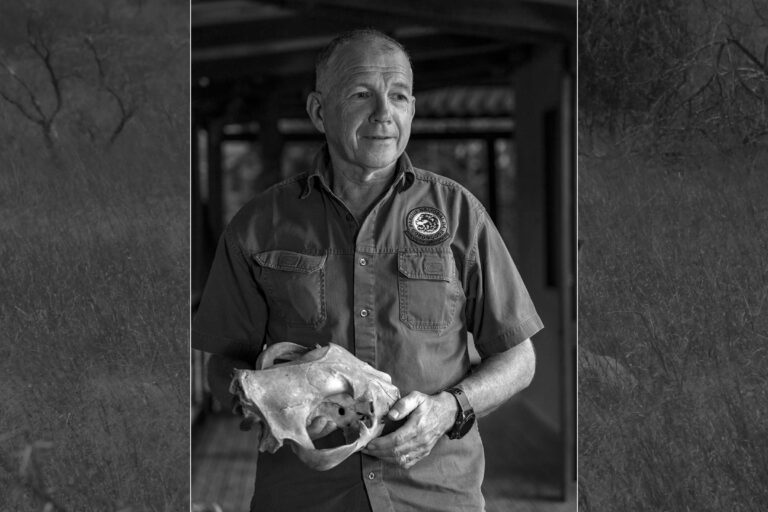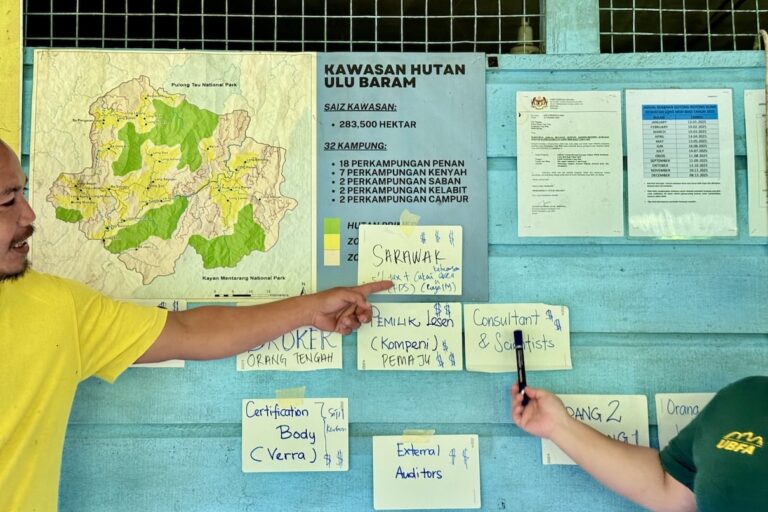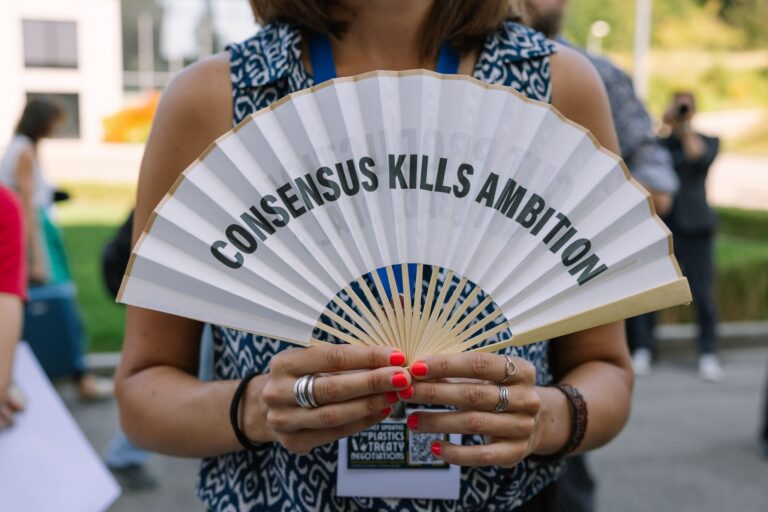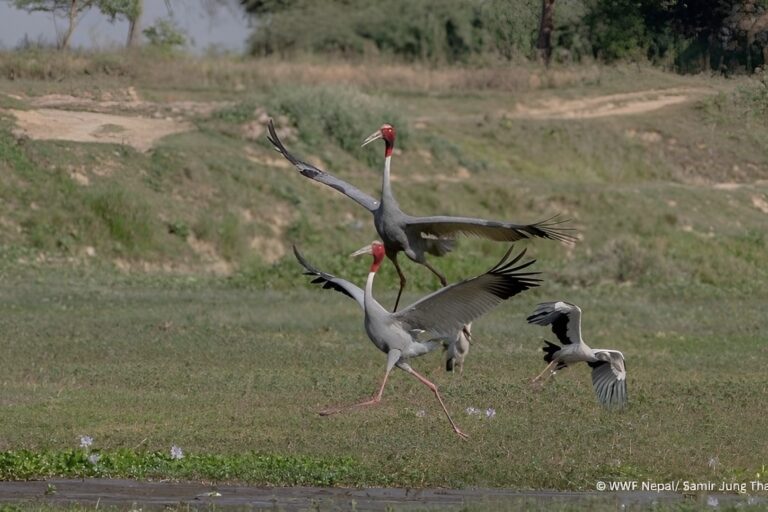- In Brazil’s semiarid Caatinga biome, wind power farms have brought dirt, noise and disruption to the livelihood of local communities.
- Many locals say the project developers have failed to properly consult them before building roads, infrastructure and turbines in the region.
- Wind power is considered a clean energy source in Brazil, which qualifies developers for access to easier financing and licensing, often at the expense of conflicts with local villages.
- From loss of livelihoods to damaged houses, this investigation by the Marco Zero news outlet shows how the development model that Brazil has adopted for wind power expansion has come at a high cost to rural communities.
CERRO CORÁ, Brazil — Antônio Acelino de Moura, 65, says he imagined the future had finally arrived at his community in the northeast of Brazil when, in 2012, he heard the news that a wind farm would be built here. Moura, a farmer with tanned and weathered skin bearing witness to years of work in the fields, watched eagerly from his porch, surrounded by cassava and corn crops, as the first trailers approached the village carrying massive turbines and propellers. He’d never seen such big machinery before.
The trucks would come and go several times a day, changing the routine of a community that rarely saw cars passing by before. Moura’s village of Recanto takes its name from the Portuguese word for a quiet paradise. But the reality here is far from idyllic. The village consists of a single row of houses built along a dirt stretch of state highway RN-310, cutting through copses of small, thorny trees standing along empty streets with a few spots of faded grass. The landscape is typical of the Caatinga, a type of semiarid biome where the vegetation persists despite the lack of rain — a far cry from the lush forestscapes Brazil is better known for. Moura was excited; the long-awaited progress seemed to be coming in a hurry.
He was convinced the highway would be quickly upgraded to cater to the trucks carrying such expensive equipment, followed by engineers and technicians. He also expected his energy bills to become cheaper as the wind turbines started turning.
None of his dreams came true. The monthly energy bills continued to rise. The road remained unchanged, with each passing truck only adding another layer of dust to the village. The construction of the Santa Rosa Mundo Novo (SRMN) wind complex, owned by EDP Renewables, a Spain-based subsidiary of Portuguese utility giant EDP, has made the air even dirtier for the village residents. As a result, the windows and doors in Recanto remain closed day and night, despite temperatures exceeding 30° Celsius (86° Fahrenheit).

Moura and his neighbors were resigned to the dust, but their problems didn’t end there. To set up the turbine towers, the wind complex employees used dynamite to blast rocks and level the ground. The explosions caused cracks in Moura’s walls.
“The explosions were powerful, and the tiles were blown off,” Moura says in a slow and calm tone, his unbuttoned shirt exposing a large scar on his chest from heart surgery. “They set off three explosions at once, and the dust engulfed the town for hours. We couldn’t even see the horizon,” he adds, pointing to the cracks in his wall.
EDP Renewables didn’t respond to several requests by Marco Zero reporters for a comment to the community’s complaints.
On its website, the company says its top priority is “to promote human rights and fair labor practices across the value chain. EDPR is therefore committed to integrate the social aspects in planning and decision-making and to guarantee responsible operations throughout the whole lifecycle of its business. EDPR actively seeks to promote the values of integrity, responsibility and transparency in its value chain and in society in general.”
Although the benefits of wind energy over fossil fuels are well known, Moura’s case and those of many others across northeastern Brazil show that clean energy generation can also have a negative impact on surrounding communities if wind farms are built without taking into account their environmental and social impacts.
A longtime major oil producer, Brazil has bet heavily on renewable energy, becoming Latin America’s leader in renewable power generation capacity and setting itself up as an example for other countries looking to expand into clean energy. But this transition hasn’t been as clean as the name suggests. The model adopted for wind power expansion has come at a high cost to rural communities in the country — an issue often overlooked in politicians’ speeches and concealed from the advertising campaigns promoted by big businesses.

Renewable, but not harmless
Brazil has 903 wind farms, with 240 of them in the state of Rio Grande do Norte alone. The state produces 30% of the 24.62 gigawatts of national production of this type of energy, according to the Renewable Energy Map.
The model that renewables developers here are pursuing is known as centralized generation, where wind farms are clustered in a given region to produce a large amount of energy from a concentrated space. But this model tends to cause great harm to both people’s lives and the environment, says Heitor Scalambrini Costa, a physics professor and expert in energy policy at the Federal University of Pernambuco (UFPE).
“It is wrong for us to talk about clean energy because there is deforestation in this process, there is a change in landscapes and in the way of life, and all this creates big problems,” Costa says.
While emphasizing that he supports renewable energy development to reduce carbon emissions, Costa says the current Brazilian model and its management need to be discussed as they’re likely to result in “irreversible and irresponsible damage.”
The extent to which wind energy is “clean” is a crucial question — one with reputational impacts for the companies developing it, but also legal and financial consequences.
“Calling wind and solar energy clean energy implies, for the environmental legislation, that they are of low impact, and this exempts companies from having to submit an environmental impact assessment [EIA] and environmental impact report [RIMA by its Portuguese acronym], which are two essential documents in the inspection implementation of projects that affect the environment,” Costa says.
The regulatory framework for these projects can be complicated. Under Brazilian law, the licensing and oversight of wind energy projects operating in the country are the responsibility of each state. So while the regulations are federal, established through laws approved by Congress and applicable nationwide, it’s the environmental agency of each state that analyzes, licenses and authorizes the operation of private wind farms.
There are also many incentives in place from the government to spur the development of sustainable energy, yet not enough incentives to ensure they comply with regulations to protect communities or move away from the centralized generation model. The law allows states to grant discounts and exemptions on state taxes, and the federal government to provide tax incentives on developers’ revenue. Financing is also available through the National Bank for Economic and Social Development (BNDES) for Brazilian companies developing wind projects. 
A global geopark at risk
Not far from Recanto village, wind farms are causing a different kind of disruption: threatening a local ecosystem.
Scientists and environmentalists have denounced the development of the Pedra Lavrada wind complex by Casa dos Ventos Energias Renováveis, the biggest Brazilian renewable energy developer. The project would see 372 wind turbines peppered across 1,600 hectares (nearly 4,000 acres) of land straddling eight municipalities in Rio Grande do Norte and Paraíba states.
The main concern for environmentalists is the impact of the complex on Seridó Geopark, named a UNESCO Global Geopark in April 2022. The site is a sanctuary for parrots, macaws and parakeets, including the near-threatened blue-winged macaw (Primolius maracana). Only 30 individuals of this species have been identified so far in the park, according to the NGO Seridó Vivo as part of the Caatinga Potiguar Project by the Federal University of Rio Grande do Norte. As Mongabay reported recently, the construction of wind farms near bird habitats poses a threat not only from the risk of collision with the turbine propellers and power lines, but also from the impact of construction on the vegetation the birds require to survive.
Another particular concern is the potential for damage to or destruction of archaeological sites in Seridó, home to rock paintings, burial sites, ancient dwellings and more from ancient Indigenous cultures. In the region of the Olho d’Água and Bojo streams alone, 20 such sites have been cataloged, all of which could be damaged in blasts like the one that cracked the wall in Moura’s house.
According to Seridó Vivo, the EIA and the RIMA submitted by Casa dos Ventos to obtain its license were flawed. “There is no ecological zoning and there is a lack of technical studies to assess the negative impacts of the undertakings on biodiversity, the historical-cultural heritage, and human life in the areas surrounding the parks,” the NGO said in a statement.
It added the company may have omitted or minimized impacts such as the deforestation of a large area of Caatinga vegetation, increased desertification, degradation of archaeological sites, and changes in the way of life of communities and traditional populations. Casa dos Ventos, which partnered last year with French oil and gas giant TotalEnergies to develop the latter’s renewable energy portfolio in Brazil, denied there would be any damage to Seridó’s geological heritage. “On the contrary, the foreseen actions involve the company’s co-responsibility, together with public agencies, in the identification, protection and monitoring of this heritage in the area of parks,” the company said in a statement.
Pedra Lavrada is just one of several wind farms planned around the geopark. In the neighboring municipality of Lajes, 34 wind farms are currently in operation, and another 33 have been planned. These projects, under various developers, are awaiting approval from state authorities and are expected to generate 1.5 GW — 50% more than the 0.99 GW that the entire state of Pernambuco, which neighbors Rio Grande do Norte, currently produces.

A wall blocking fishers from the sea
The lack of thorough studies to identify and mitigate the medium- and long-term impacts of building clusters of wind turbines has already led to unforeseen consequences. Fishers in Ponta do Tubarão State Sustainable Development Reserve in Sertãozinho, Rio Grande do Norte, have been living with some of these impacts.
The reserve, a type of protected area where some forms of sustainable exploitation of resources are permitted, currently hosts five wind turbines that are part of the Miassaba II wind farm, owned by the Brazilian company Bioenergy Geradora. The turbines, which can weigh up to 72 tons and reach 200 meters in height, are located in a dune area between the river and the sea, a strategic location for the region’s fishers, who have to cross a tidal arm in their canoes to reach the sandy barrier that separates the mangroves from the ocean.
To allow access for the company’s trucks and SUVs, workers built a gravel road — made of stone and coarser sand than the beach sand — that crosses the sandy barrier from end to end. The road’s embankment is 2 meters (6 feet) higher than the surrounding terrain, effectively creating a wall between the residents of Sertãozinho and the sea.
For fishers like José Martins, this has meant a radical change in his routine. Whereas before they would easily cross the sandy barrier to reach the sea, now he and the other fishers have to scramble up the gravel embankment, cross the road, and descend again to reach the sea, carrying their nets and other fishing gear. On the way back, they retrace the same path, only this time carrying fish baskets weighing up to 30 kilograms (66 pounds).
“Our work depends on the tides; sometimes we work during the day and at night,” Martins says.
Bioenergy Geradora couldn’t be reached for comment. The company’s website lists a phone number, an email address and a contact form, but none of them appeared to be working, despite multiple attempts.

In a corporate video, the company says that “for the implementation of the Miassaba 2 and Aratuá 1 parks, Bioenergy has taken several socioenvironmental actions,” but it doesn’t elaborate on what these actions are. The Aratuá 1 park is also located in Rio Grande do Norte.
The impact on the Ponta do Tubarão reserve has also increased concerns about what’s still to come: offshore wind farms.
“It is necessary to consider the infrastructure that will be set up for the installation of these offshore farms and the damage they will cause,” says Luiz Ribeiro, a fisher and member of the reserve’s management council. “Will the environment be able to recover? And after it recovers, what happens in case of decommissioning, which would involve removing these structures? The environment is being modified too frequently and the consequences are severe.”
Ribeiro says multiple objections were raised with environmental regulators against the installation of the wind farms in the reserve, but these were never considered. He adds that establishing a dialogue with the state government, led by the Workers’ Party of President Luiz Inácio Lula da Silva, has been difficult.
“We can see that one of the wind turbines is less than 33 meters [108 ft] away from the highest tide, so it is a completely illegal construction according to the rules … which stipulate that any masonry structure is only allowed after the 33-meter mark,” Ribeiro says. “Additionally, we are in an area where turtles nest. In 2010, when we were mapping the markers placed by the company to demarcate the area for the construction of the wind turbines, we found a turtle nest in one of the sections. To this day, no study has been submitted to the state government that shows the impact that wind farms can have on these species that nest here.”
Macau, the municipality where the Ponta do Tubarão reserve is located, already has an offshore oil field, formerly run by state-owned oil company Petrobras but sold to 3R Petroleum in 2019, at the beginning of then-president Jair Bolsonaro’s administration. The difference with the planned offshore wind farms is that the oil platforms are far from the fishers’ routes, Ribeiro says.
“The wind turbines will be placed on top of fishing grounds, locations heavily used by fishermen in their activities,” he says. “Maritime regulations prohibit vessels from approaching within a 500-meter [550-yard] radius of structures in the sea, so this will prevent fishermen from accessing areas where fish shoals gather.”

A broken promise, and a fight to regain access
While the fishers at Sertãozinho have to climb a wall to get to the sea, residents of the coastal village of Enxu Queimado, farther east in Rio Grande do Norte, have completely lost their access to their fishing grounds after a new wind farm was built on the outskirts of the village. Just like Recanto farmer Antônio Moura, the people of Enxu Queimado had high hopes for the wind farm, which were soon dashed when the propellers started turning.
“When the wind energy businessmen arrived here, they held meetings with the community, and it was all very beautiful propaganda,” says fisher and community leader Maria Joelma Martins. “They said we would have normal access to the park areas, that we could raise livestock, and that rural [farmers] would benefit. They also promised marvelous social services because they would do everything they could for the community. But the reality is that they did absolutely nothing.”
The União dos Ventos wind farm was built by Serveng Energia, a subsidiary of Brazilian conglomerate Serveng.
“They prohibited anyone from entering the wind farms; you can’t enter without permission. That’s why everything is fenced,” Martins says. The fence extends beyond the boundaries of the wind farm up to a point along the seaside.
It used to be worse. For the first few months, the fence prevented direct access to the sea, forcing the fishers to make a detour to where their boats were anchored and where the fishing of shellfish and crustaceans is better. The company eventually moved its fence back following community pressure.
Serveng Energia couldn’t be reached for comment.
“Initially, there were more people, mostly women, and we coordinated with SEDRAF,” Martins says, referring to the state agency for rural development and family farming. That’s how our battle began,” she adds.
Despite that small victory, the community has lost one of its sources of livelihood. “Our tradition was to run on the dunes, search for olives, and swim in the lagoons that formed between the dunes, as well as to plant and harvest in the forests and floodplains,” says one of the fishers. “But our green area is gone. They spent a whole year just deforesting and destroying the sand hills to build the parks.”

Land speculators emerge
Losing access to the sea wasn’t the only problem the Enxu Queimado community has had to contend with. The model of planting large tracts of land with hundreds of wind turbines has created more than just environmental problems. Enxu Queimado isn’t part of the bustling tourist routes in the state, so it doesn’t offer much for travelers. There’s only one restaurant in the village, located on the ground floor of the village’s sole inn, itself just a two-room establishment. However, the arrival of the União dos Ventos wind farm nearby has led to a surge in local real estate prices, which in turn has drawn at least two speculators claiming to be the owners of the land that the village sits on.
Martins says the problem began in 2020, during the height of the COVID-19 pandemic, when an Italian businessman arrived in the community with “everything planned out,” as she puts it.
“He claimed to have all the information about our houses, even down to the number of pieces of furniture and rooms in each one,” she says. “He asked us to go to the notary because everything was ready for the regularization process, and he wanted us to pay for the land.”
The businessman even attempted to charge the villagers fees for surveys they’d never asked for.
The case has since turned into a legal battle, led largely by the community’s women, against the company Teixeira Onze, represented by Italian national Marcello Giovanardi. Initially, the company presented a land purchase document and obtained a favorable court ruling for repossession of the land from the villagers. Essentially, the 3,100 inhabitants would either have to vacate their homes or purchase them from the new supposed “owner.”
However, the decision was later overturned by a higher court. Gustavo Freire, the lawyer representing the residents of Enxu Queimado, says the company can’t prove ownership of lands it had never occupied to begin with, which is the legal basis for its claim.
“This type of action aims to regain possession that no longer exists because a squatter was expelled from the land and now wants it back,” Freire says, noting that in this analogy, the squatter would be Teixeira Onze. “The issue is that in order to claim possession of the land, the squatter must prove prior occupation, as only those who use the land are entitled to it, even if they are not the owners.”
Giovanardi didn’t answer to phone calls and WhatsApp messages requesting comments.

Turbines in the backyard
Aside from the environmental and legal issues that have emerged from the installation of wind farms close to villages, there’s also a concern about their effect on public health, particularly through long-term exposure to the noise and dust generated by the turbines.
In Pernambuco state, the constant high-volume noise is one of the problems reported by farmers in the community of Sitio Sobradinho, in the municipality of Caetés. The community lies in such close proximity to a wind farm that residents describe the turbine noise like that of an airplane permanently flying low over their houses, and have reported increasing health issues such as insomnia, anxiety, depression and hearing loss. For many, sleep is only possible with the help of medication.
Like with Moura, cracks appeared in the walls of Rosalma de Melo’s house after the installation of wind farms by Cubico Sustainable Investments, a U.K.-based renewable energy developer. The turbines stand just 150 m (about 500 ft) behind the property where she lives with her husband, their two children and her in-laws.
“We have suffered a lot because of the noise, which is too loud, and the dust as well,” Melo says.
With her house surrounded by wind turbines, Melo says she fears the structures may collapse and cause a serious accident.
“Recently, the propeller of one of them fell right behind my house,” she says, showing a video of the incident.
It occurred at the end of 2021, when the blades of one of the turbines exploded and fell.
“The day the propeller broke was very scary,” Melo says. “It was early in the morning, my children were still sleeping when, suddenly, we heard the explosion. It destroyed all the plants. That’s because it was just a piece of the propeller. If it had been the whole tower it would have done a lot more damage.”
A video recorded by the family shows shards of the blade hanging perilously off the propeller hub while a loud noise emanates from the turbine.
Cubico didn’t respond to requests for comment. On its website, Cubico says it’s “committed to playing a significant role in the world’s transition towards clean energy while respecting the environment and social development of the communities in which we operate. We are passionate about shaping the future of energy with a long-term investment philosophy that generates stable returns for our shareholders.”
AES Brasil acquired the Caetés Wind Complex in November 2022 and said in a statement that, since then, it has carried out a “communication campaign to present itself to neighboring communities as the new company responsible for the venture, as well as to make its channels available service.”
The institutional contact channels that AES offers residents are e-mail and telephone. Regarding the complaints presented by the residents regarding the socio-environmental damage caused by the wind farm complex facilities, AES stated that “it has evaluated all the issues raised by the community and maintained periodic dialogues with the group of representatives of the families and the lawyer who represent them and, therefore, is confident that together they will reach a solution to the issue.”

An alternative model
Costa, the energy policy expert, says adopting an alternative business model could help minimize the potential risks and damage from such renewable energy projects in Brazil. He calls for decentralized systems of smaller installations rather than the current system of large, concentrated clusters.
“The larger the area occupied by wind turbines, the greater the impact on the environment will be,” he says.
Costa points to successful examples of decentralized systems in Brazil, such as the installation of solar panels on residential rooftops, the use of smaller wind turbines, and the installation of smaller numbers of turbines within limited areas.
“If large-scale installations are truly necessary and well-justified, they should be located in areas affected by desertification to minimize direct interference with people’s daily lives and the environment,” he says.
At the policy level, Costa says, the fragility of public institutions in Brazil exacerbates the threats posed by large-scale enterprises. Lax environmental standards and a lack of effective oversight for renewable energy ventures have contributed to the detrimental impacts caused by these industrial-scale wind farms, he says.

‘Had I waited for them, my house would have collapsed’
Back in the village of Recanto, Antônio Moura says he’s been assured by representatives from EDP Renewables that they’ll implement community improvements as compensation for the damage caused by the installation of their turbines. But these promises remained unfulfilled, leaving the residents to shoulder the burden of repairing the damage caused by the blasting.
“They disclaimed any responsibility for the cracks, forcing me to personally purchase materials and cover all expenses. Had I waited for them, my house would have collapsed,” Moura says.
He’s patched the cracks with cement, but the unrelenting dust persists. Consequently, Moura made the decision to abandon life in Recanto. He now rents a house in the municipality of Lajes and makes the daily commute of 23 kilometers (14 miles) to tend his corn, bean and cassava crops back in Recanto, his sole source of livelihood.
In addition to dealing with the damage and frustrations caused by the arrival of the wind farm, Moura lost his son during the pandemic. Amid the grief, he’s considered relinquishing his property altogether due to the unbearable weight of the damage caused by the wind farm and his waning strength to keep fighting for his rights.
“I used to have a rose garden, to raise chickens. It was so peaceful,” Moura says. “I don’t have that anymore. Many people said I would benefit from the arrival of the towers, but I only suffered losses. Not just me, but the entire community. I think I even lost a bit of joy for life.”
This story was originally published in Portuguese by Marco Zero. Giovanna Carneiro and Arnaldo Sete are Report for the World corps members with Marco Zero in Recife, Brazil.
Fair winds or fowl: Clean energy clashes with conservation in Brazil’s Caatinga
FEEDBACK: Use this form to send a message to the author of this post. If you want to post a public comment, you can do that at the bottom of the page.













